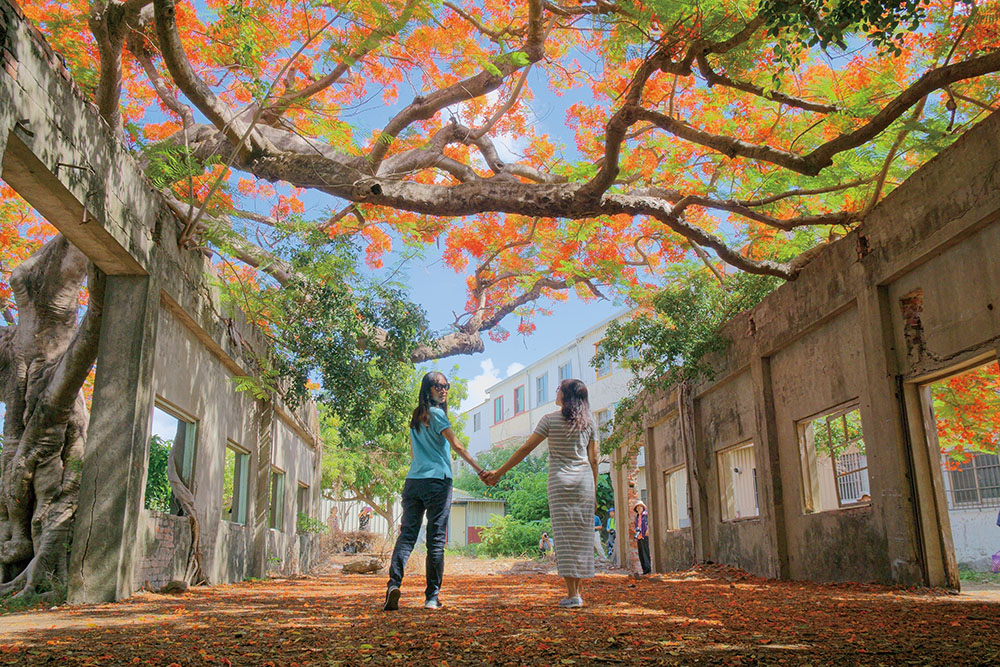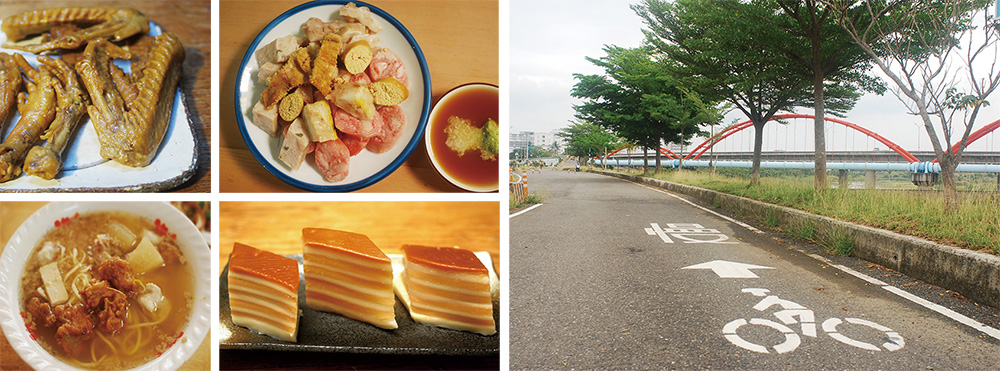Seeing Little-Known Sights in Hunei District
Seeing Little-Known Sights in Hunei District
◎Written by Yu Jia-rong
◎English translation by Hou Ya-ting
◎Photos by Yu Jia-rong, Bill Hwang
Hunei District is located in the northwestern part of Kaohsiung City, separated from Tainan City by the Erren River. To the east and south, Hunei is adjacent to Lujhu District. Back in the Cing dynasty – which ruled Taiwan between 1684 and 1895 – Hunei's Hu Street (today's Mincyuan Road) was a key route approaching Tainan City. Today, Hunei is served by Taiwan Highway 1 (in the western part of the district, and not to confused with Freeway 1) and Taiwan Highway 17 (in the eastern part of the district). Hunei has a number of sites that few outsiders know about, but which have considerable historical or cultural relevance.
Long ago, Hunei was dominated by swamps, ponds, and lakes. The district's old name was Dahu, literally “big lake.” Mr. Akiyoshi Abe, a Japanese writer who published a book called Taiwan's Place Names in 1937, described Hunei District as an area surrounded by lakes.

King Ningjing's Tomb
History buffs will enjoy a trip to the Tomb of King Ningjing, the Ming dynasty pretender buried in Hunei. Designated an historic site by Kaohsiung City, this grave is located between Hunei District's Hunei Village and Lujhu District's Jhuhu Village.
The king's original name was Jhu Shu-guei (some historical accounts spell his name Zhu Shu-gui). Turbulence after the collapse of the Ming dynasty resulted in the king and his supporters fleeing to Taiwan in 1663.
Ningjing – a ninth-generation descendant of Hongwu, the Ming emperor who reigned from 1368 to 1398 – had been living in Taiwan for more than 20 years when Shi Lang, commander-in-chief of the Cing navy, inflicted a military defeat on the Ming loyalists at the Penghu islands. The pro-Ming leadership in Taiwan soon surrendered, and King Ningjing realized the tide of history had gone against him. Rather than flee, he committed suicide in Hunei District, and local people built this grave for him. It is a pleasant, leafy place to linger for a while, thanks to the tall trees and an ecologically-rich pond.
Unique Local Scenery
From King Ningjing's Tomb, visitors can take Taiwan Highway 1 toward the abandoned Hunei Pineapple Cannery. This facility was originally a tomato cannery operated by Taiwanese and Japanese. After World War II, it was converted into a pineapple cannery. The derelict site is home to several gorgeous flame trees. During the season when they burst with redness, these trees attract photographers. What is more, the cannery is both a humble backdrop and a witness to the passing of the years.

Riding a bike is a wonderful way to explore Hunei District, and the local government has laid out a cycle trail along what used to be a narrow-gauge railway operated by Taiwan Sugar Corporation to transport sugarcane. Cyclists can enjoy rural scenes such as fields of rice and fish farms. Bike enthusiasts who pedal from Hunei Village to Dahu Village will pass a bridge surrounded by lotus ponds. In fact, one of Hunei's agricultural specialties is lotus root, and visitors should not leave without trying a cup of lotus root tea at one of the lotus root shops near the ponds. This cool, refreshing beverage can wash away fatigue.
A pathway encircles the periphery of Dahu Village. Travelers who wander along it can explore the neighborhood and chat with local folk. For those who like nostalgia, there is a coffee-shop at No. 161, Mincyuan Road that is decorated with Taiwanese phonographs.
Hunei District's Traditional Snacks
Aunt Bao-guei's Crispy Spare-rib Soup, at No. 534, Jhongjheng Road Sec. 1, is highly recommended by local residents as well as out-of-towners. Aunt Bao-guei's stand is next to Wunsian Theater, and she has plenty of anecdotes about the theater to share with customers. The soup's aroma in combination with Aunt Bao-guei's hospitality ensures many customers return again and again. Another beloved eatery can be found at No. 19, Jhongjheng Road Sec. 1; it sells seafood and a wide array of pork offal, as well as minced crab balls, octopus, fish roe, sausage, and pork belly. Those in the know dip these delicacies in a blend of thick soy sauce and minced garlic. The simple yet delicious taste has been delighting gourmands for years.
Hunei District used to be famous for raising ducks. Among professional chefs, Hunei ducks are renowned for their high quality. Hunei chefs who specialize in duck dishes are proud of the fact that they use local ducks, and in Hunei local duck meat can be enjoyed at “luwei” (braised flavor) eateries. One of these is Songcun Luwei, at No. 168-1, Sinyi Road; another is Yadong Luwei, at No. 102, Jhongjheng Road Sec 1. Both stew their ingredients first, then add sophisticated flavors by applying smoking techniques.

Other local delicacies much in demand are Uncle Rice Cake's brown-sugar glutinous rice cake and layered rice cake, both of which have tender, chewy textures. Uncle Rice Cake is named after its founder, Mr. Lin Jian-an, who cooked rice cakes at Haipu Village for more than six decades. His cooking skills turned these humble desserts into wonderful treats. Since he passed away, his son and daughter-in-law have kept up the tradition. They now operate a stall in the morning market in front of Fuan Temple at No. 102, Jhongjheng Road Sec. 1. Those who want to enjoy Hunei's legendary rice cakes should get here between 5 o'clock and 7 o'clock in the morning.